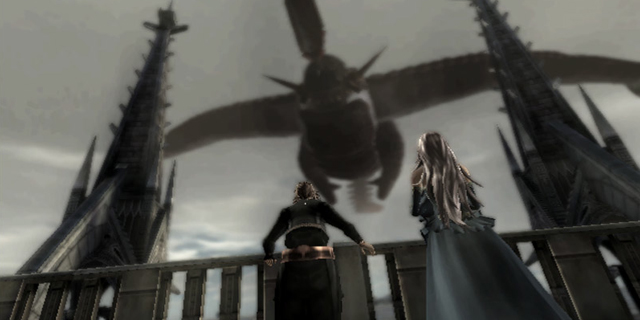
For those complaining about the potential death of the JRPG, this year is a treasure trove of big releases. From Xenoblade Chronicles to Tales of Graces f, the genre has been alive and kicking again for the first time in a few years. And now, the man responsible for creating the Final Fantasy series is at it again with his team at Mistwalker, bringing us The Last Story. This Wii exclusive JRPG tells a relatively formulaic tale, but thanks to its action-heavy battle system, it manages to stand out in the genre.
The story follows a group of young mercenaries attempting to make it big and eventually become knights. After they stumble upon a mysterious cave during one of their operations, Zael, the main protagonist, finds that he has been gifted an ancient power. Eventually, the group finds a young woman attempting to escape her life of royalty, a vast conspiracy, and a war between the humans and a species known as the Gurak. It’s all very familiar territory for those who have experience with JRPGs and the game plays it relatively safe, but the routine groundwork never weighs down some of the central themes and conflicts found throughout the game’s narrative.
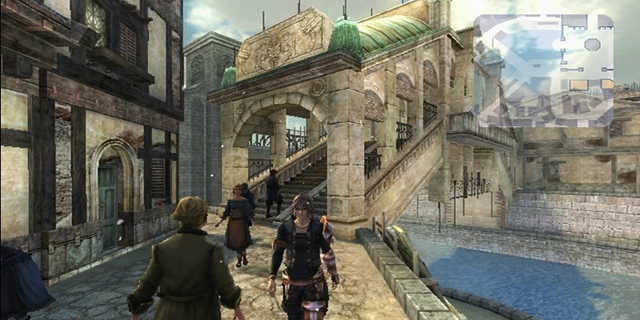
There are still plenty of exciting moments to be found, and the plot, however simplistic it is at times, is still engaging thanks to the game’s fantastic and eccentric cast of characters. Zael and Calista, the two leads, aren’t particularly exciting, but it’s the supporting cast that really sells it. Eventually you’ll feel right at home with this group of mercenaries; with every new conversation, you feel like you’re just getting in touch with an old group of friends. The writing is never completely groundbreaking, but thanks to the development of the cast and the surprising sense of humor at the heart of their relationships, there is a lot more to love here than you might think.
The art style, character design and overall look to the game add a lot to the experience. Voice acting is, for the most part, solid. You can tell the actors and actresses had a lot of fun with some of the sillier moments found throughout the game’s story. Finally, there’s Nobuo Uematsu’s brilliant score, which tops off the game’s presentation with a remarkable amount of weight to it. You can tell that Uematsu went to great lengths to craft something completely unlike his previous works while still sticking with what makes his music so memorable in the first place.
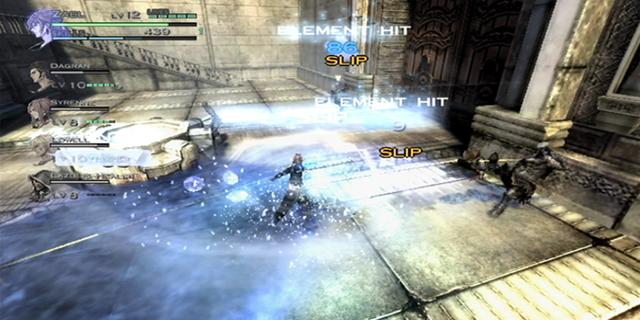
The gameplay is broken up into two categories: exploration and combat. When you’re not on an important mission, you’ll be left to explore the central hub, Lazilus City. There you can complete assorted side quests, test your skills in the arena, buy and upgrade weapons and equipment and have conversations with various NPCs or your own group about the goings-on in Lazilus. The majority of it is optional, but I found myself exploring every nook and cranny in the city and uncovering plenty of interesting side stories along the way. Despite these moments of freedom, the game is structured very linearly, but it’s not a major problem.
And then there’s the battle system, this title’s biggest draw. It’s action-heavy, with the ability to command your group members accordingly. Each character has a different focus, some being primarily attack-based while others are more oriented towards using magic or support. Your basic attacks are all done in real time, with two options available: automatic and manual. Automatic is the default, which has you attacking automatically just by moving towards a specific enemy, while manual uses a button press to attack. Both are perfectly functional, but I can’t imagine not using manual as it allows for more precise control during the trickier battles.
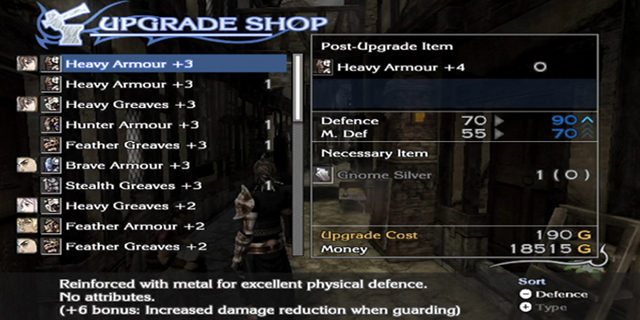
Some battles will have you playing more strategically, which is where squad commands and the cover system come into play. Taking cover will give you a better way to attack enemies from a distance with your ranged weapon (in this case, a crossbow), while also giving commands to your magic users. While you aim with your crossbow, you can also target specific things in the environment to attack or tell the people in your party to use magic against, which is a nice addition. Your party members’ A.I. doesn’t always follow your commands, but when they do, you’ll find yourself taking down large groups of enemies with ease.
One of Zael’s primary abilities in battle is called Gathering, which allows him to draw the enemy’s attention away from his comrades, giving them ample time to attack or cast magic. This is especially useful when you need your magic uses to cast specific spells in order to defeat enemies, but cannot due to heavy resistance. It’s not wise to always have the ability active (Zael can get overwhelmed easily), but it adds a lot to the already strategic nature of battles.
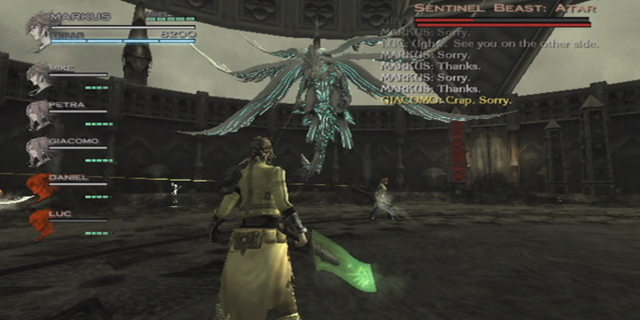
Another big change is how magic works. Each spell cast creates a circle either around your party or the enemy. For example, standing in a heal circle will slowly heal you, while standing in the circle of an offensive spell while attacking an enemy will give your attacks the attribute of that circle (like fire or ice). You also have the ability to use Gale, a move that spreads the effects of a magic circle on your group or the enemy. Heal circles will heal your entire party quicker, while offensive spells will break an enemy’s defenses or cast status effects like stun or silence on them. You can also use this move to diffuse enemy magic circles. This all helps make the magic system feel like an active part of battles and not just something that you see happen in the background; the spell casters of your group all feel more essential as a result.
The fluidity and ease of control during battles is what really makes the battle system in The Last Story unique. You never find yourself fighting with the controls; you can take cover or jump over shorter cover easily and maneuver around obstacles during battles with no problems. The thing that breaks the flow of combat is the immense slowdown that occurs during particularly hectic battles or even when navigating some areas of the city. When slowdown gets so bad that you can barely even tell what’s going on, it’s a major problem.
The Last Story is far from a flawless game. It some regards, it barely attempts to try anything new and plays it safe. At the same time, we are presented with a beautifully crafted world, a very fun group of characters, and a dynamic battle system that is at the heart of this game. It may take a while to grow on you, but once it does, you’ll find yourself completely entranced.
Pros: Fun battle system with fluid controls, great cast of characters, amazing soundtrack
Cons: Slowdown hurts the flow of battles, some problematic A.I.



















